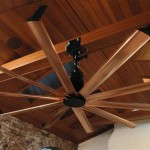Essential Aspects of the Best Lighting Setup for Outdoor Portraits
Creating captivating outdoor portraits requires careful attention to lighting. Lighting can transform a portrait, highlighting facial features, enhancing depth, and evoking emotions. Understanding the essential aspects of outdoor lighting setups enables photographers to harness natural light to their advantage and produce stunning and memorable images.
This article delves into the key elements of the best lighting setup for outdoor portraits. We will explore the different types of lighting and their effects, the impact of time of day, and tips for managing challenging lighting conditions. By mastering these aspects, photographers can confidently navigate outdoor lighting and elevate their portraiture to new heights.
Types of Lighting
The type of lighting plays a significant role in shaping the mood and atmosphere of a portrait. The two primary types of lighting in outdoor photography are:
- Natural Light: Derived from the sun, natural light offers a full spectrum of colors and intensity, depending on the time of day and weather conditions.
- Artificial Light: Sourced from external devices like strobes or LED panels, artificial light provides controlled illumination and can compensate for unfavorable natural lighting conditions.
Time of Day
The time of day has a profound impact on the quality of outdoor lighting. Different times of day offer distinct lighting characteristics:
- Golden Hour: The hour after sunrise and before sunset, known as the "golden hour," provides warm, diffused light that flatters skin tones and minimizes harsh shadows.
- Midday: Midday sunlight is harsh and creates unflattering shadows. It is best avoided for outdoor portraits unless diffused with softboxes or reflectors.
- Overcast Days: Overcast conditions provide soft, even light that eliminates shadows and reduces the need for additional lighting.
Managing Challenging Conditions
Outdoor lighting conditions can be unpredictable and challenging. Here are some tips for managing unfavorable lighting situations:
- Use Reflectors: Reflectors redirect natural light to reduce shadows and brighten the subject's face.
- Diffusers: Diffusers soften harsh midday sunlight and create more flattering lighting.
- Artificial Fill Light: When natural light is insufficient, artificial fill light can enhance exposure and reduce shadows.
Conclusion
Understanding the essential aspects of outdoor lighting setups empowers photographers to optimize natural light and create captivating portraits. By choosing the appropriate type of lighting, considering the time of day, and implementing techniques to manage challenging conditions, photographers can transform their outdoor portraits into works of art that capture the beauty of nature and the essence of their subjects.

Lighting Gear For Outdoor Portraits B H Explora

8 Invaluable Tools For Outdoor Photographers On A Sunny Day B H Explora

How To Mix Ambient Light And Fill Flash For Outdoor Portraits

11 Outdoor Portrait Photography Tips For Easy Shots

How To Use Off Flash For Portraits Outdoor Photography

Outdoor Flash Photography Tips For Natural Or Dramatic Portraits

11 Outdoor Portrait Photography Tips For Easy Shots

How To Set Up Three Point Lighting For Portrait Photography Improve

Portrait Photography 101 Poses Lighting Settings

Lighting For Outdoor Photo And B H Explora
Related Posts







